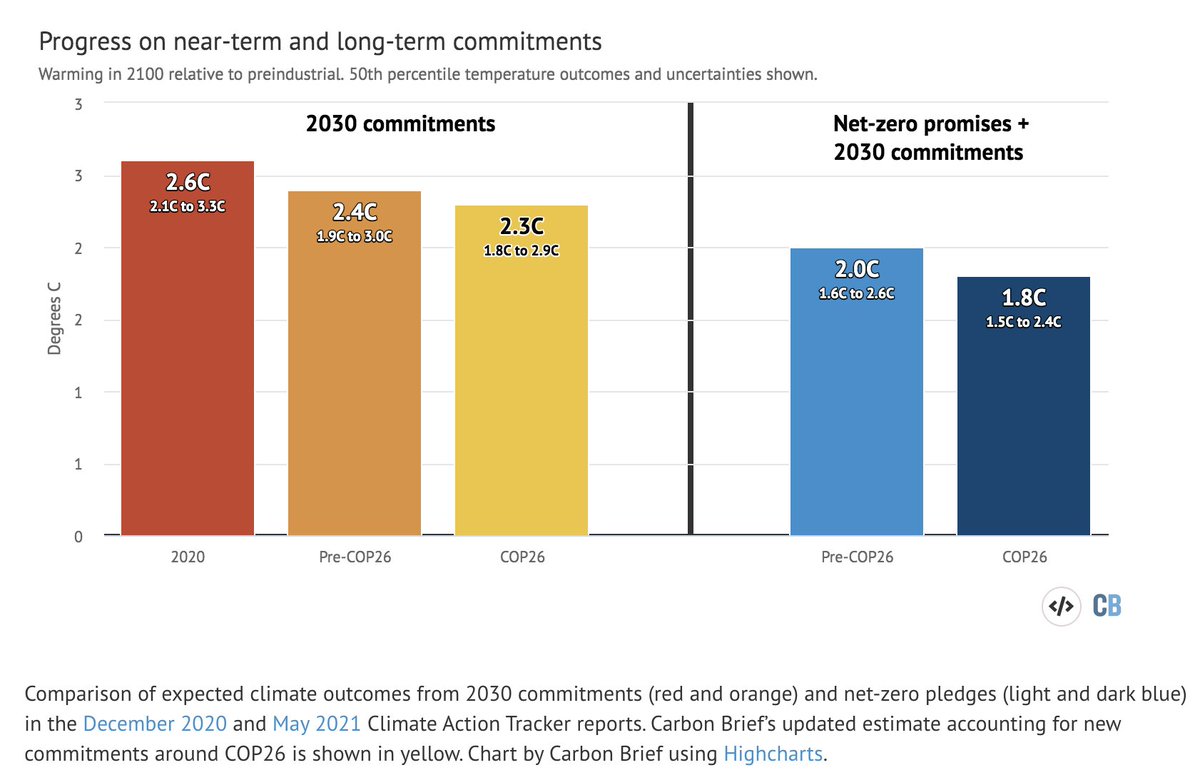
The recent IPCC AR6 updated remaining carbon budgets for 1.5C and 2C scenarios.
These budgets let us make simple estimates of when emissions need to reach zero if we allow no net-negative emissions.
1.5C (66%): 2039
1.5C (50%): 2044
2C (66%): 2077
2C (50%): 2088
A thread: 1/8
These budgets let us make simple estimates of when emissions need to reach zero if we allow no net-negative emissions.
1.5C (66%): 2039
1.5C (50%): 2044
2C (66%): 2077
2C (50%): 2088
A thread: 1/8

These are subject to a number of assumptions (and uncertainties), of course. Allowing net-negative emissions expands remaining budgets, while more convex (or concave) emissions pathways would change the date at which zero emissions needs to be reached:
https://twitter.com/hausfath/status/14646088517480857652/
Assumptions around non-CO2 GHG emissions and aerosols also matter. The IPCC provides a best estimate (and uncertainties), but more pessimistic or optimistic assumptions for non-CO2 forcings would reduce or expand the remaining carbon budgets accordingly. 3/
The IPCC AR6 largely had the same carbon budgets as in the older IPCC SR15 report for 50% likelihood, but increased the remaining budget for 66% likelihood outcomes reflecting the narrowing of the range of likely climate sensitivity in the AR6: carbonbrief.org/analysis-what-… 4/ 

There were lots of other changes "under the hood" to budgets in AR6, including a reassessment of differences between ocean surface and air temperature warming differences, the inclusion of earth system feedbacks, etc. For more details see @JoeriRogelj 
https://twitter.com/JoeriRogelj/status/14247437826464399445/

We can also compare these simple emissions pathways to those I created back in 2020 (dashed lines) based on the SR15 and emissions data available at the time. A few notable things stand out: 
https://twitter.com/hausfath/status/13091914980181647366/

First, historical emissions were reassessed downwards in the latest emissions data from @gcarbonproject. For example, 2019 emissions went from 43 GtCO2 to 40.5 GtCO2. Second, while 50% pathways did not change, the 66% ones became more gradual reflecting the increase in budgets 7/ 

For more details on recent revisions to historical emissions, see: carbonbrief.org/global-co2-emi… 8/8
(note that the TCRE-based diagram in the linked tweet is somewhat inconsistent with budget-based calculations here as it does not account for any future changes in non-CO2 forcings, but its intended to be illustrative of the impact of convex pathways rather than prescriptive)
• • •
Missing some Tweet in this thread? You can try to
force a refresh











